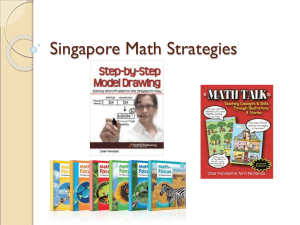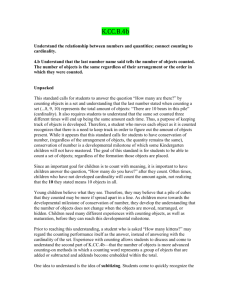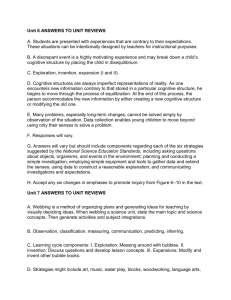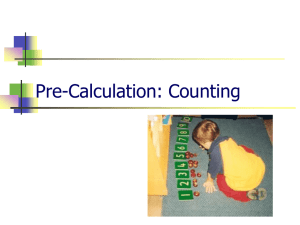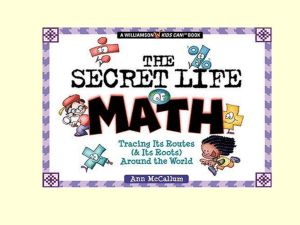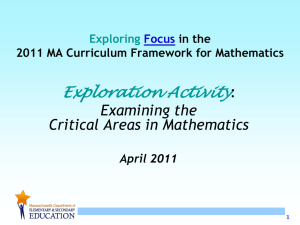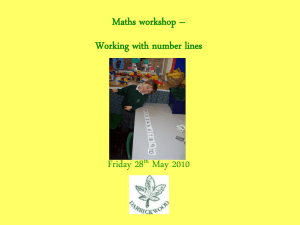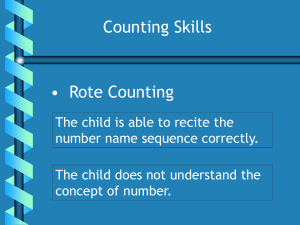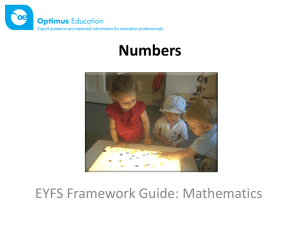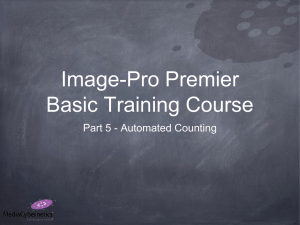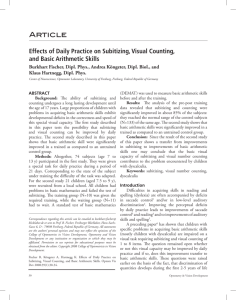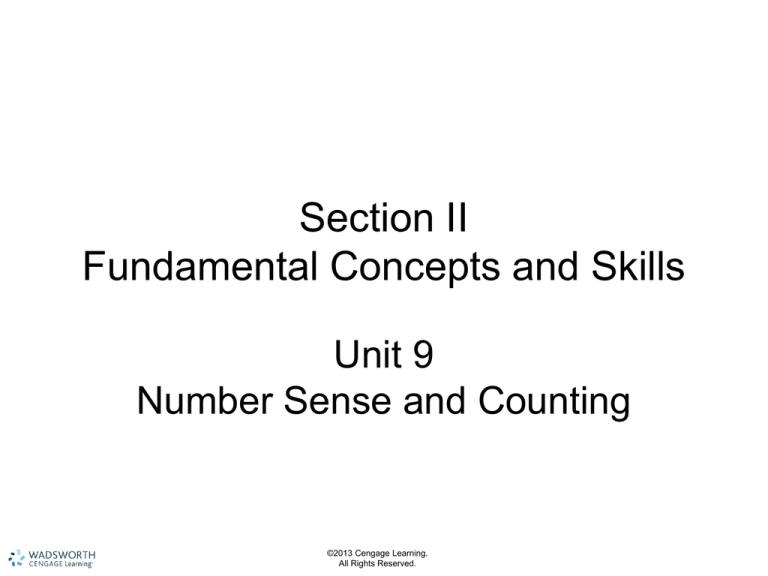
Section II
Fundamental Concepts and Skills
Unit 9
Number Sense and Counting
©2013 Cengage Learning.
All Rights Reserved.
Number Sense:
Understanding Number
• Number sense is the concept of
– understanding “oneness”, “twoness”, etc.
– making the connection between quantities
and counting
– understanding more and less
– understanding important benchmarks such as
5 and 10 as they relate to other quantities
– helping children estimate quantities and
measurements
©2013 Cengage Learning.
All Rights Reserved.
Counting
• Counting is a skill
– assists children in the process of understanding
quantity
– provides understanding that the last number named
is the quantity in the group and supports number
sense
- Counting includes two operations:
• rote counting
• rational counting
©2013 Cengage Learning.
All Rights Reserved.
Two Counting Operations
• Rote counting
– reciting the names of numerals in order from
memory
• Rational counting
– matching each numeral name in order to an
object in a group
©2013 Cengage Learning.
All Rights Reserved.
Examples of Number Sense and
Counting Activities
Naturalistic
Activitiess
• Practicing rote
counting
• Use of number in
child’s activities:
“I have two trucks.”
Informal
Activities
• How many ears do
you have?
• Put six napkins on
each table
• How many cups do
you need to give
everyone at your
table one?
©2013 Cengage Learning.
All Rights Reserved.
Adult Guided
Activitiest
• Use of rhymes,
fingerplays, and
songs
• Clapping and
counting as a group
• Experience with
groups of items 0-4
• Group games that
require counting
• Sorting small objects
Subitizing
• When shown a group, seeing “how many”
instantly
• Two types of subitizing:
1. Perceptual subitizing
• when shown a group, one can state how many without
• counting or grouping
• Young children usually learn to subitize up to four items
perceptually
2. Conceptual subitizing
• Involves seeing number patterns within a group such as
the larger dot patterns on a domino
• Viewer may break the eight-dot pattern down into two
groups of four, which makes up the whole
Perceptual subitizing
• Is thought to be the basis for counting and
cardinality (understanding the last number
named is the amount in a group)
• Develops from counting and patterning
and helps develop number sense and
arithmetic skills
• Preschoolers can subitize perceptually.
Conceptual subitizing
• Conceptual subitizing for small quantities
usually begins in first grade.
• Quantities from one to four or five are the
first to be recognized
• Concept of number is constructed bit by bit
from infancy through the preschool years
and gradually becomes a tool that can be
used in problem solving.
Evaluation
• Note answers given by children during
adult guided sessions
• Observe children to see if they apply what
they know
• Formal evaluation can be done individually
• Collect photos, anecdotes, and checklists
for portfolios
©2013 Cengage Learning.
All Rights Reserved.
Section IV
Symbols and Higher-Level Activities
Unit 23
Symbols
©2013 Cengage Learning.
All Rights Reserved.
Number Symbols
• Numerals
– each represents an amount
– each acts as shorthand for recording
how many
©2013 Cengage Learning.
All Rights Reserved.
Number Symbol Skills
• Acquired during the preoperational period
• Six skills acquired by young children:
– child learns to recognize and verbalize the names of
numerals
– child learns to place the numerals in order
– child learns to associate numerals with groups
– child learns that each numeral in order stands for one
more than the numeral that comes before it
– child learns to match and make sets of the size the
numeral represents
– child learns to write numerals
©2013 Cengage Learning.
All Rights Reserved.
Examples of Symbol Activities
Naturalistic
Activities
Informal
Activities
• Children become
• During preoperational
aware of numerals in
period, most activities
the environment as
should be informal
they see them and hear • Observe children as
references to them
they work with
• Children begin using
materials after
the names of numerals
showing children
how to use them
• Children begin to learn
– self-correcting
number symbols and
materials
then use them in play
– manipulative
materials
©2013 Cengage Learning.
All Rights Reserved.
Adult Guided
Activities
• Activities that include
– number recognition
– sequence and more
than one
– association with groups
Assessment and Evaluation
• Does the child show an interest in
numerals?
• Does the child use self-correcting
materials?
– What does he do with them?
• Note which numerals the child can name
and if the numerals are named in
sequence
©2013 Cengage Learning.
All Rights Reserved.

